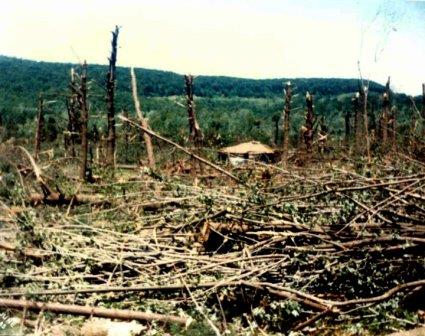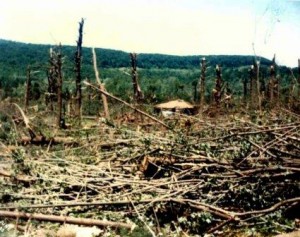
Surrounded by hundreds of yards of uprooted and snapped off trees, five survived the violent May 31, 1985 tornado that rumbled and chewed through Parker Dam State Park.
Howard Hunt and his two sons were on a Boy Scout outing 30 years ago today at the park. They were accompanied by another father and son from their Boy Scout troop.
“It was sunny and nice out,” said Hunt’s son, Ken, who was age 7 at the time. “[The forecast] only called for possible thunderstorms and showers that evening.”
Ken Hunt said typically on Boy Scout outings, they camped out in tents. However, his father stopped at the park office for the key to the Civilian Conservation Corps (CCC) cabin.
“We were going to camp out in the woods there, but I heard there was a chance for rain later on that evening,” recalled Howard Hunt. “I knew the park ranger and stopped in for the key. It’s a good thing that I did.”
Ken Hunt said when the scouts got to their eight-sided cabin, they started unloading his father’s pick-up truck and building a fire inside. After, he was standing on the front porch with the two fathers.
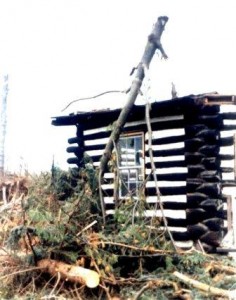
Ken Hunt said it wasn’t long before the wind started to pick up, and there was absolutely no warning of the violent tornado.
“It sounded like a freight train and not one but a whole bunch of them coming at you all at the same time,” said both father and son.
Howard Hunt said the other boys who were listening to Ghostbusters inside the cabin came running for the doorway. “We made it from the porch to the doorway,” he said. “That’s how far we made it.”
Ken Hunt recalled the wind blowing his brother’s hat off of his head. He said, “We held on to anything we could get a hold of to keep from being blown away.”
“I was holding onto my youngest son’s (Ken’s) hand, and the other father was holding onto his other hand. He was just swinging up and down in the air,” said Howard Hunt.
Both father and son said it seemed like “eternity” and “forever” for the tornado to blast through the park but in reality it was only like 90 seconds to two minutes.
Ken Hunt said being only 7 years old, he had no idea what was happening around him. “I was scared and just wanted to go home,” he said.
After, he said they opened the cabin door to observe the tornado’s destruction. He said the trees surrounding the cabin were uprooted and snapped off.
“[That day] we didn’t hear about any tornado outbreak,” said Ken Hunt. He said people never thought a tornado could traverse the mountains of central Pennsylvania.
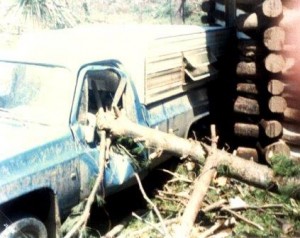
Howard Hunt recalled that his pick-up truck was parked next to the cabin. He said it took a tree right through the driver’s side window; it put the window even with the truck’s seat. Howard Hunt said his truck was also filled with dried-up leaves and other debris.
Later on Howard Hunt said a friend and his boy showed up to camp out with them at Parker Dam. However, they couldn’t drive back to the cabin and had to get out and walk.
That night he said both of his boys wanted to go home. On their way out, he said they climbed over blown down trees and probably live utility wires to get out of the park.
“It was quite an experience. I remember it so vividly even though it’s been 30 years. It’s not something that I’ll ever forget,” said Ken Hunt. His father said fortunately, there were only five of them participating in this Boy Scout outing.
Throughout the remainder of his childhood years, Ken Hunt said he didn’t like to hear about severe thunderstorms. Nowadays he said they don’t bother him so much.
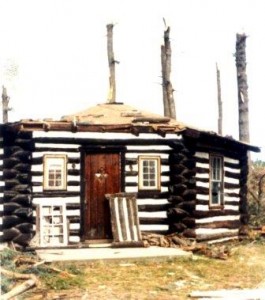
“I know what it’s like to live through one and today, we have more warning. Back then we had no warning – none.”
The Moshannon State Forest tornado was among those that swarmed on May 31, 1985 in Ontario, Canada and Ohio, Pennsylvania and New York.
The tornado struck Parker Dam at 7:45 p.m. It leveled many towering, majestic trees during its two minutes of destruction, leaving only the CCC cabin standing in the ravaged park.
The tornado, a violent F-4 on the Fujita scale, touched down near Penfield and traversed 69 miles in 90 minutes with wind gusts reaching up to 250 miles per hour. An F-5 is the most violent tornado rating on the Fujita scale.
Carey Huber, environmental education specialist, said some evidence of the tornado remains in Parker Dam 30 years later. He said downed trees are still on the ground and haven’t rotted away completely yet.
He said where some root balls were pulled up and roots rotted away, there are small mounds of dirt/rocks. He said that, “Someone with a keen eye for forests would be able to tell that for the most part, the forest is not yet a mature one, and continuing through its process of succession.”
At the same time, Huber said that “the average visitor” might not be able to discern the forest that had been destroyed from another.
“Pretty much all of the damage within the park was in the northern third. The storm just missed the maintenance area and the park manager’s residence. It did hit what was then known as the Cabin Classroom, or Camp Shawnee,” said Huber.
“The cabin was not completely destroyed but suffered some major damage. Five people on a scouting trip were just getting unpacked for the weekend at the Cabin Classroom when the tornado hit. All survived, which is amazing considering the tornado was later determined to be an F4-strength and that it leveled pretty much every tree around the cabin for hundreds of yards.”
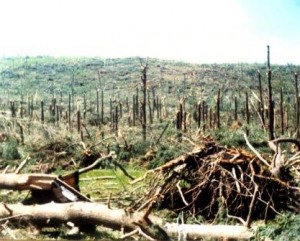
According to Huber, they had to cut the road open with chainsaws because there were so many trees snapped off and thrown about in all directions. He said that the roof was replaced on the Cabin Classroom and other repairs were made, as well. Huber noted that it is still one of the reserveable cabins in the park.
He said that salvage timber cuts were made on the east side of Mud Run Road in the park. However, on the west side, he said they let the trees as the storm left them to observe the forest’s natural recovery following such a disaster. He said that some trees were planted after the tornado near the Organized Group Tenting Area to help replace some of what had been destroyed.
“Many of these look like a part of the maturing forest at this point all these years later,” said Huber. He said that a new trail, the Trail of New Giants, was located through part of the destroyed forest, replacing the previous Trail of Giants of which many of the trees had been destroyed by the tornado.


